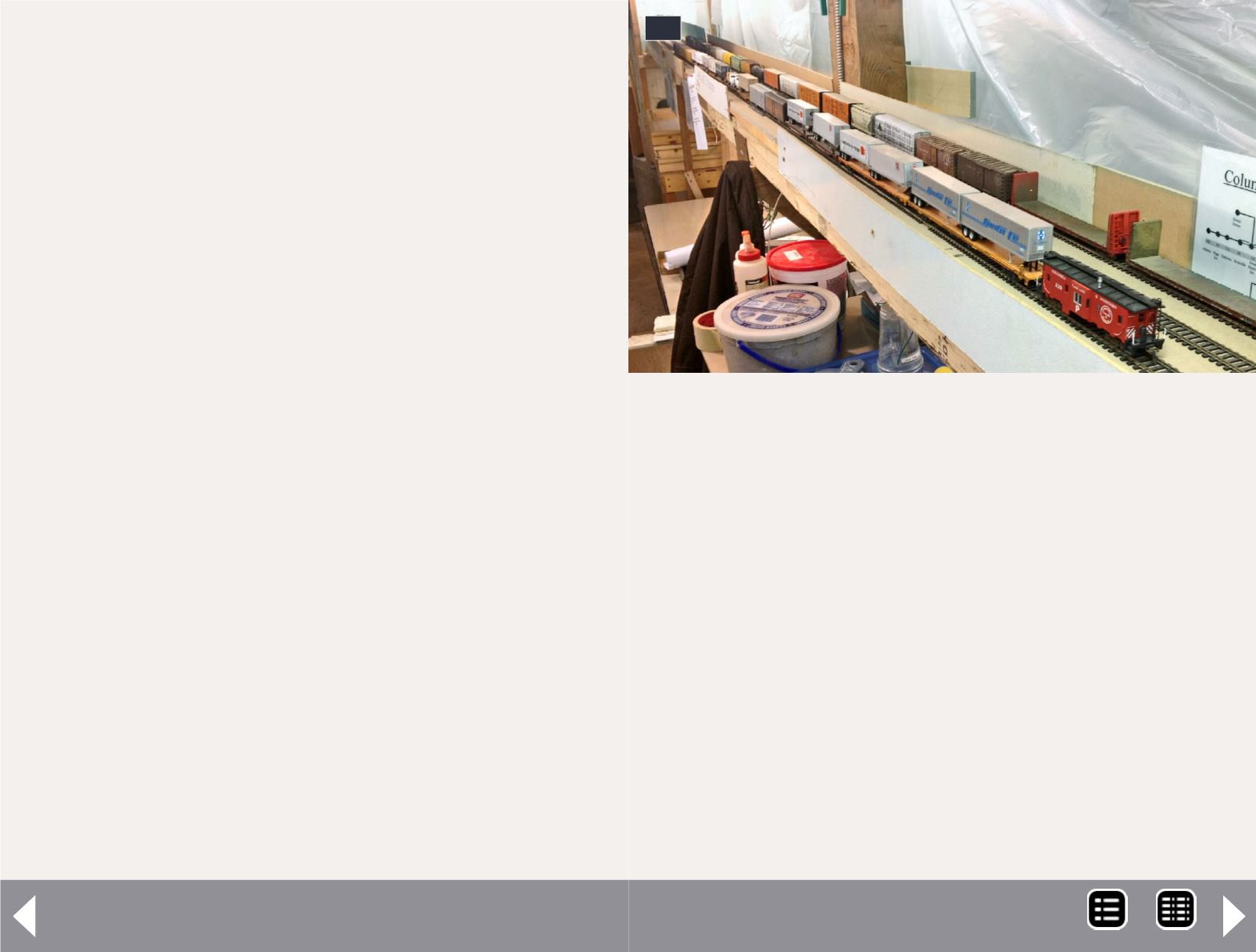
“We converted over from DC to DCC, and about two months
later the building flooded. And that was the good thing! We
had a DCC system ready and in place when we built the new
layout. So we didn’t have to spend a lot of money on starting
from scratch with a new DCC system.”
MRH:
“So how many throttles, boosters, and things are you
guys running now?”
David:
“We run approximately eight or nine throttles during
an operating session. These are the little hand throttles, and
we’re all radio. There are also at least two Pro Cabs and we got
a Power Cab in for testing, setting up, and so forth.
“Many of the members have their own NCE throttles. There’s
the main command station and two boosters. That’s largely
because we have concrete walls here and it can be difficult to
get the signal to go through, so that’s how we make sure we
don’t get any dead spots. We run radio normally but we have
tether spots all the way around, so if a person wants to bring in
their throttle with a tether, they can run normally with that.
“My personal opinion, Digitrax and NCE and so on, I think all
the DCC systems are certainly comparable. It really comes
down to a matter of what you’re comfortable with. I personally
have operated on layouts with Digitrax. Once you remember
how to set the throttles to work with the locomotives, you’re
on your way – you don’t have to know all the specifics.
“If you want to get into more the programming, that’s some-
thing separate. I think NCE is a little more logical in terms of
how it goes about it. But that’s just a personal opinion. We
found the NCE system is just fine. Some of our members here
have Digitrax personally, but they will still come down and eas-
ily run the NCE system. It’s worked really well for us.”
Columbia Cascade and Western - 15
MRH:
“How many operating sessions does the club do?”
Rick:
“We originally had a session on the fourth Saturday of
the month. There were some members that couldn’t make it
because they had weekend activities. So we decided to start
the session on Thursday and end it on a Saturday.
“We have two different sessions, an a.m. and a p.m., so we
would start the a.m. on a Thursday evening and run from 7:30
until 10 o’clock. At 10 o’clock we literally turn the layout off,
and everything stops. Then we pick up Saturday at 10 a.m., and
operate the a.m. session until we finish, which is usually before
noon. We break for lunch. At 1 o’clock we would start the p.m.
session, we draw for jobs, and we run until five or six.
18
18: The east-end staging tracks, now dubbed the “USS
Granite Mountain,” have been used in two previous sites
as the club builds its mainline east. The club focuses on
operation, and movable staging assures that construction
doesn’t interrupt monthly sessions.
MRH-Feb 2013


